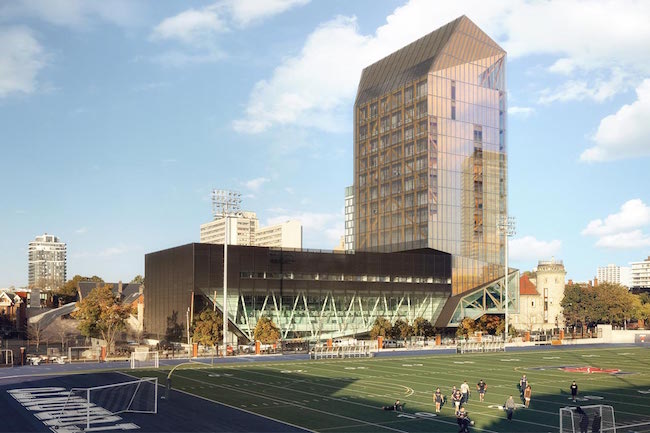
Wood construction renaissance may not be quite all it’s built up to be, report says
By On-Site Staff
Concrete Construction Materials
A rendering of a new 14-storey mass timber and concrete hybrid tower planned for the University of Toronto campus. PHOTO: University of Toronto/MJMA and Patkau Architects
WINNIPEG—Sustainability has taken on an increasingly important role in Canadian construction in recent years. The energy-intensive processes required to manufacture concrete and steel have, at least in part, propelled another age-old building material back to the fore.
In numerous projects across the country, developers have turned to traditional lumber and innovative wood products, such as cross-laminated timber, to reduce a building’s impact on the environment while ensuring the design remains structurally sound.
While many life cycle assessments (LCAs) show using wood can lower a building’s carbon emissions, a new study from the International Institute for Sustainable Development (IISD) finds these analyses often overlook several important factors in assessing the “cradle-to-grave” emissions of building materials.
Most notably, the Winnipeg-based think tank said typical LCAs do not track or account for “biogenic” carbon — a category that includes carbon losses related to soil disturbances, imperfect reforestation efforts and the conversion of old-growth primary forests to less productive secondary forests. The study, which was commissioned by the Cement Association of Canada, adds that these sources can account for up to 70 per cent of total lifecycle emissions and “challenge the prevailing assumption wood construction materials are less carbon intensive than steel or concrete and should be favoured.”
About 30 per cent of all Canadian GHG emissions come from built environments. And while the IISD study argues that LCAs are the proper tool to employ when deciding what building materials to use, it says Canada needs to develop more robust standards to ensure all analyses are tracking consistent metrics. The study adds that policy makers should focus on building efficiency and longevity when working to decarbonize the built environment.
“This study identifies serious gaps in the way we currently account for carbon emissions from building materials, particularly emissions from forestry products,” said Jay Malcolm, a University of Toronto forestry professor and member of the study’s advisory committee.
“We need to strengthen our metrics to make sure our strategies to reduce carbon from buildings hit their mark,” he added.
Meanwhile, wood buildings continue to rise.
Many builders and governments have already made up their minds about the material’s sustainability credentials. British Columbia, for instance, said last month it would amend its building code to allow construction of 12-storey wood towers, up from six previously. Premier John Horgan said the move is part of the province’s effort to “realize our low-carbon future.”
The change gets a jump on similar changes to the national building code expected next year.
You can read the full report or executive summary here.




